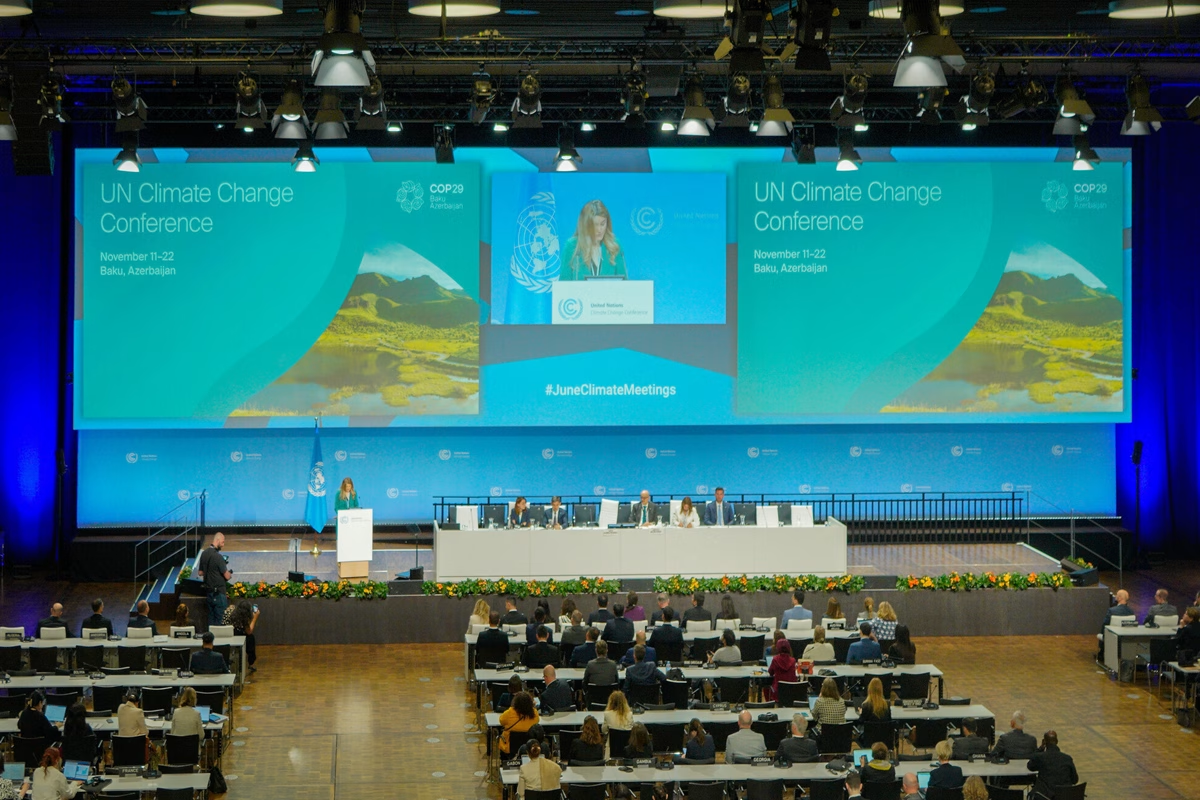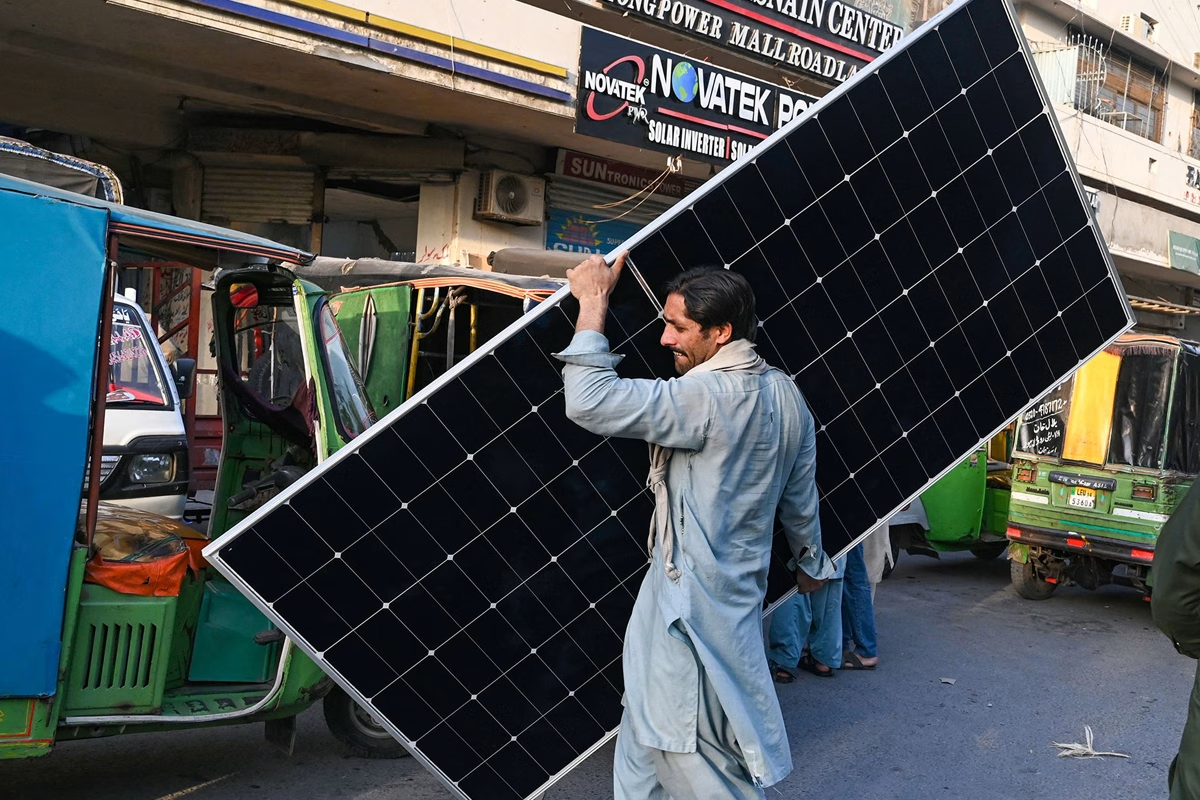
‘Haryali’ art exhibition, Denmark calls for urgent environmental action in Pakistan
November 26, 2024
Pakistan to host ‘energy roadshow’ in Saudi Arabia
November 26, 2024Pakistan possess huge opportunity to decarbonize, reduce emissions through Just Energy Transition: Experts
A high-level panel discussion on the sidelines of COP29 at the Pakistan Pavilion showcased Pakistan’s energy transition efforts, discussing pathways to a sustainable future amidst growing climate concerns.
The panel, titled “Pakistan’s Energy Transition: Pathways to a Sustainable Future”, brought together key stakeholders from government, industry, and climate organizations to address the country’s renewable energy goals, challenges, and opportunities in reducing greenhouse gas emissions.
Managing Director of ITrust, Liz Branden set the tone for the discussion by emphasizing the energy sector’s role as the largest emitter of CO2, with demand continuing to rise globally. Branden highlighted that although Pakistan is one of the smallest emitters of greenhouse gases, the country faces catastrophic climate impacts, including devastating floods and significant economic losses, despite its minimal contribution to global emissions.
Pakistan’s cuisine
She stressed that Pakistan has a unique opportunity to play a significant role in the global energy transition, leveraging its renewable energy potential and a strong commitment to reducing carbon emissions. The country has set ambitious Nationally Determined Contributions (NDCs), aiming to cut its carbon emissions by 30% and achieve a renewable energy mix of over 60% by 2030.
Pakistan also launched a climate finance framework at COP29, a move that has been described as a promising step toward attracting investments in climate action. However, the panellists also underscored significant barriers to the transition, particularly regulatory and financial hurdles. Branden noted that while Pakistan has vast potential for renewable energy, fiscal constraints and the need for a comprehensive policy approach remain critical challenges.
Earlier, Dr Khalid Walid SDPI presented a detailed overview of the energy landscape of Pakistan.
Managing Director of the National Energy Efficiency and Conservation Authority (NEECA), Sardar Mohazzam spoke about the importance of improving energy efficiency in the country. Pakistan has set a target to reduce 9 million tonnes of oil equivalent by 2030, to save 35 million metric tonnes of CO2 emissions annually. If successfully implemented, these measures could result in savings of up to $6.4 billion per year. However, Mohazzam stressed that Pakistan needs $1 billion annually to effectively develop the necessary energy efficiency mechanisms.
The discussion also included a comparative analysis of other countries’ efforts in energy transition. Argentina, for example, was cited as a key example of a nation that, despite having vast fossil fuel reserves, has heavily invested in renewable energy.
Argentina’s government has committed over $11 billion to renewable energy projects, achieving 30% of its energy mix from renewables. The panel suggested that Pakistan could follow a similar path, using international partnerships and knowledge sharing to overcome its barriers to renewable energy adoption.
Sanjay Vashist from the Climate Action Network South Asia highlighted the vast renewable energy potential in South Asia, noting the region’s potential for 1000 GW of solar, 1300 GW of wind, and 350 GW of hydropower. He also pointed out the critical need to phase out coal, a major energy source in the region, and emphasized the urgency of meeting renewable energy targets. According to Vashisht, South Asia’s energy transition offers a significant opportunity to lift millions of people out of poverty, with nearly 400 million people in the region still lacking access to electricity.
Vashisht called for the creation of a South Asia Renewable Energy Fund to mobilize resources for the region’s clean energy transition, suggesting that such a fund could attract investments from multilateral banks like the Green Climate Fund, as well as from domestic sources.
Throughout the discussion, several speakers stressed the need for a holistic, inclusive approach to energy transition. Janet, a climate expert at the event, emphasized that the transition should prioritize not just clean energy, but also biodiversity conservation and human protection. She called for more comprehensive solutions that involve local communities in the planning and implementation of energy projects.
Sardar Mohazzam further highlighted the changing dynamics of consumer behaviour, with rising energy prices pushing more consumers to adopt energy-saving practices. He emphasized that investments in energy-efficient infrastructure are crucial to modernizing Pakistan’s industrial sector and supporting the shift to clean energy.
Shahjahan Mirza, in his concluding remarks, summed up the key takeaways from the panel. He emphasized the need for a shift toward energy efficiency alongside the growing push for renewable energy. He also noted that South Asia’s energy transition must address the issue of circular debt, the phasing out of Independent Power Producers (IPPs), and the importance of expanding renewable energy infrastructure.
Mirza concluded with a hopeful note, pointing out that Pakistan is already making progress toward its target of a 60% renewable energy mix, with 34% of its energy already coming from renewables. He also praised the country’s efforts in launching initiatives like the Thar Coal Power Project, which aligns with global sustainability goals and energy needs.
The discussions at the Pakistan Pavilion underscored the importance of global collaboration, innovative financing mechanisms, and bold policy actions to achieve a just and sustainable energy transition in Pakistan and across South Asia.




